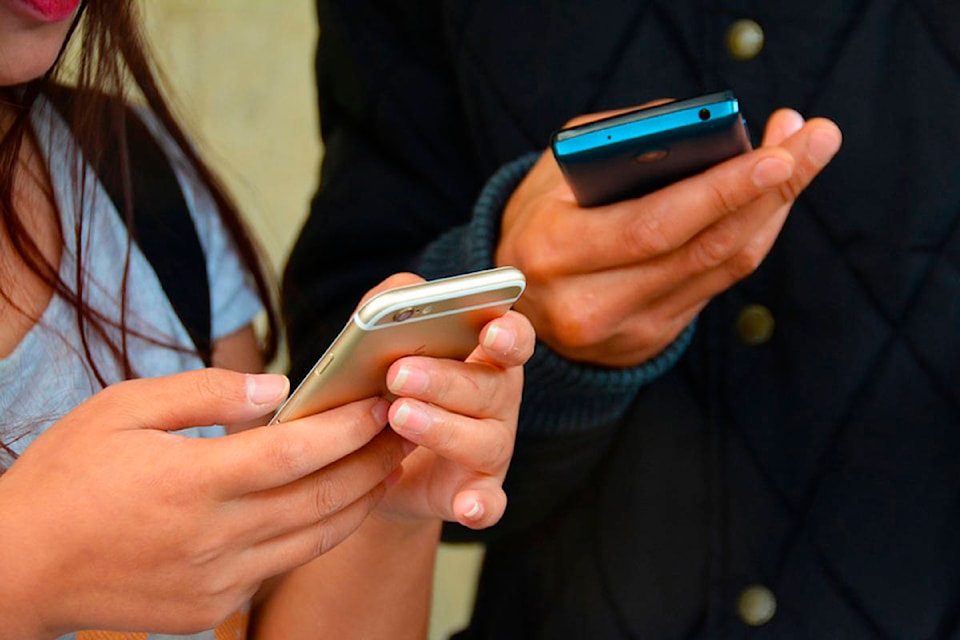If you’re a parent of a teen or pre-teen, then you understand what I mean when I say that separating a young adult from their smart phone is like trying to sneeze with your eyes open.
You likely don’t need statistics or studies to convince you that teens and smart phones are as inseparable as pimples and puberty.
But I’m going to throw some at you anyway.
Ninety-five per cent of teens now say they have a smart phone or have access to one. And 45 per cent say they are online on a near-constant basis, according to a recent Pew Research Centre survey.
Smartphone ownership is nearly universal among teens of different genders, races, ethnicities and socioeconomic backgrounds.
That’s a cold, hard fact.
And as parents wrestle with strategies to manage what some would call an unhealthy addiction, so do lawmakers and educators around the world.
Some are banning them outright.
In July of 2018, the French government passed a law banning cell phones in schools. And closer to home, cellphones will be banned from Ontario’s schools starting this September.
“Ontario’s students need to be able to focus on their learning — not their cellphones,” Ontario Education Minister Lisa Thompson told Canadian Press last week.
Luckily, our province has it right when it comes to students using their cell phones in schools. B.C. won’t follow in Ontario’s footsteps in implementing a cellphone ban. Rather, the decision will remain with school districts.
- READ ALSO: No cellphone ban coming to B.C. schools
Some argue the bans are necessary to “detox” teenagers from their phones.
I see their point.
Some of our community’s young people do seem to be a little too attached to their phones. And it is true that the distractions that come with them pose difficult challenges even for the most organized and self-disciplined adults among us.
But, aside from the next-to-impossible challenge of enforcement, banning cell phones from schools is much too simplistic a solution for such a complex issue.
Besides, it’s widely known that today’s smartphones have more computing power than all of NASA did when it started sending astronauts to the moon.
Why would we want to yank that awesome computing power out of our students’ hands?
- WHAT DO YOU THINK? Click here to email your letters
With WiFi in schools, cellphones allow students to instantly search for information, collaborate through shared documents and communicate with their parents, fellow students and teachers.
Studies have shown that students rely on calendar apps to stay organized, and on alarms to keep them on time and mindful of homework.
Sure, they might use it to post the occasional bathroom mirror selfie, but students also use their smartphone cameras to take photos of teacher notes and assignments.
Teaching our kids how to harness their smart phone’s power and use it wisely is the only way to go.
Parents and educators alike know how hard it is to separate kids from their phones.
So let’s stop trying.
Setting parameters and teaching them how to use smart phone technology properly will serve them so much better than simply yanking it from their young and inexperienced hands.
And when our kids falter?
A few bathroom mirror selfies and Fortnite memes on Instagram won’t kill us.
Beau Simpson is editor of the Surrey Now-Leader. You can email him at beau.simpson@surreynowleader.com.
beau.simpson@surreynowleader.com
Like us on Facebook Follow us on Instagram and follow us on Twitter



